On the Road is a weekday feature spotlighting reader photo submissions.
From the exotic to the familiar, whether you’re traveling or in your own backyard, we would love to see the world through your eyes.
TKH
Fauna and flora of the Sinai.
Let’s just say the Bedouin are not big on pets. There are some cats and dogs hanging around the settlements we passed through, but they were of the semi-feral variety it seemed to me. When food was served they would appear out of nowhere with the expectation of picking up some scraps. The reception they received from the Bedouin would not live up to BJ standards. The hikers received repeated “talking to’s” when they fed the animals while eating.
We had two dogs following us for days and one of the guides knew them as they had followed some of his groups before. This was in the mountains around St. Katherine where we climbed and descended steeply using ropes. The dogs always found a different way around these hairy spots that would not have been passable for the animals. And then, just as suddenly as they had appeared they disappeared again.
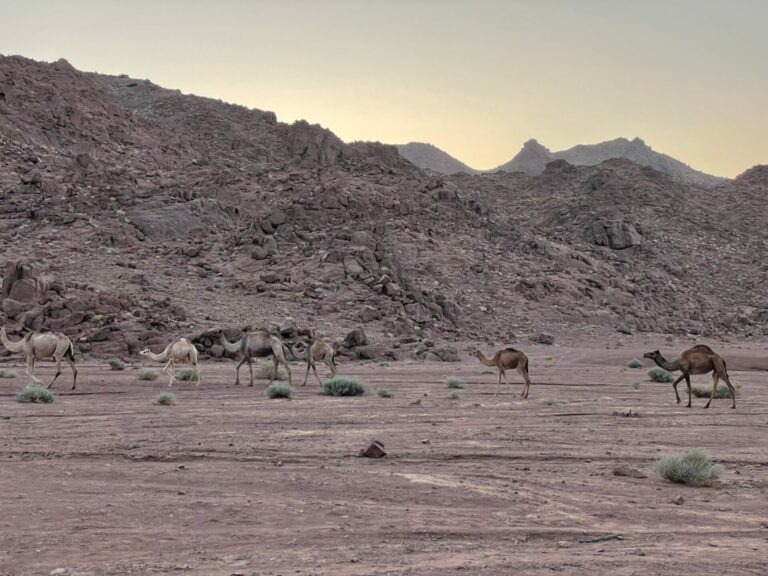
Some camels in the oasis Ein Kidd. I see no markings on their hides and think therefore that they are wild or feral.
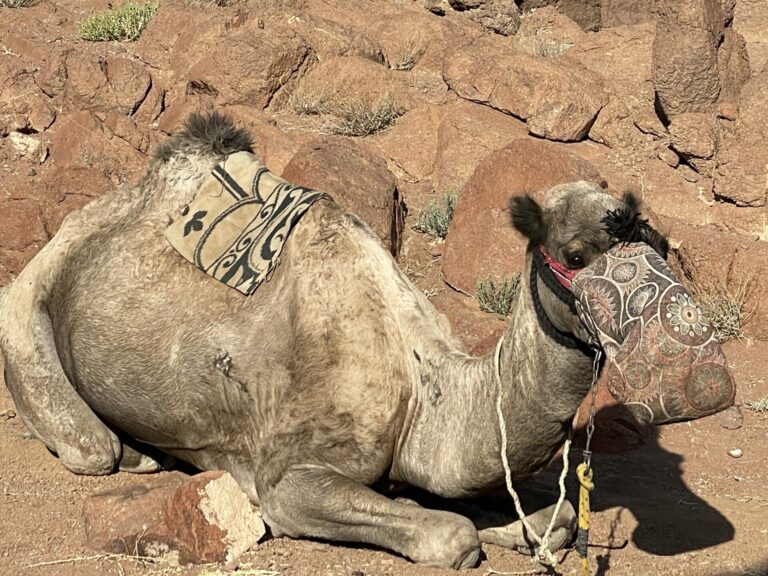
One of our camels with a feed bag containing corn and, maybe, food scraps
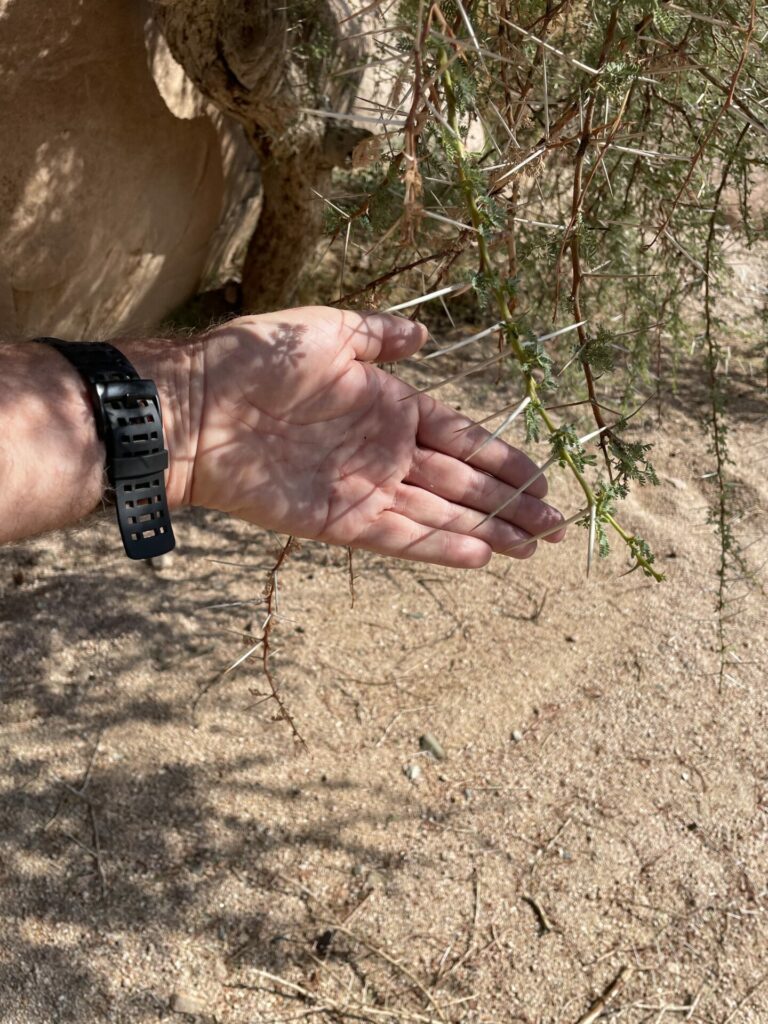
This is, and that is really hard to believe, the preferred food of the camels. My hand here gives you an idea of the size of the thorns. The animals would just walk up to the trees and start pulling down branches and munch on them. At night they were hobbled, meaning that their front legs were tied together loosely so that they could move but not too far from camp. If you woke up in the middle of the night and they were near, you could hear them regurgitating (they are ruminants) or grinding away at their very favorite vegetation.
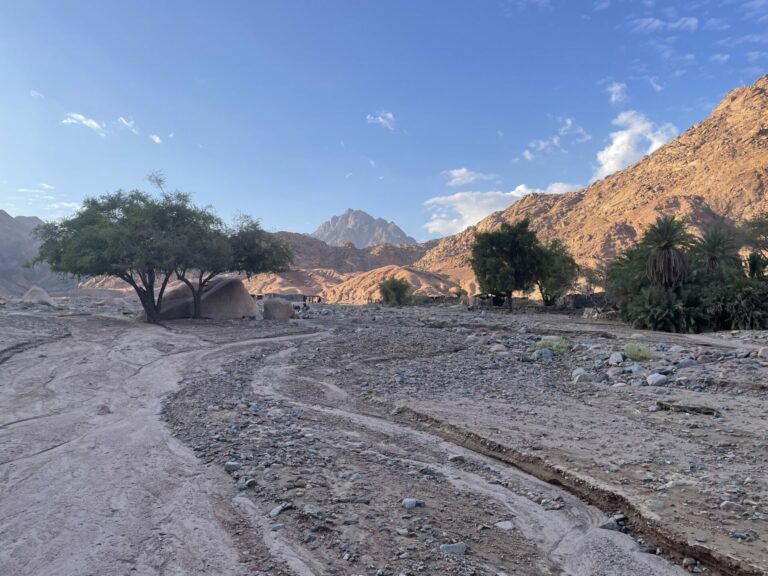
This is an acacia tree in the oasis of Ein Kidd. The greenery of the tree is cut off at the bottom. The height of this line is defined by the reach of the camel. Anything growing below gets eaten. I have seen similar on cedar trees around lakes in Northern Ontario where deer feed on branches reaching below the upper reach
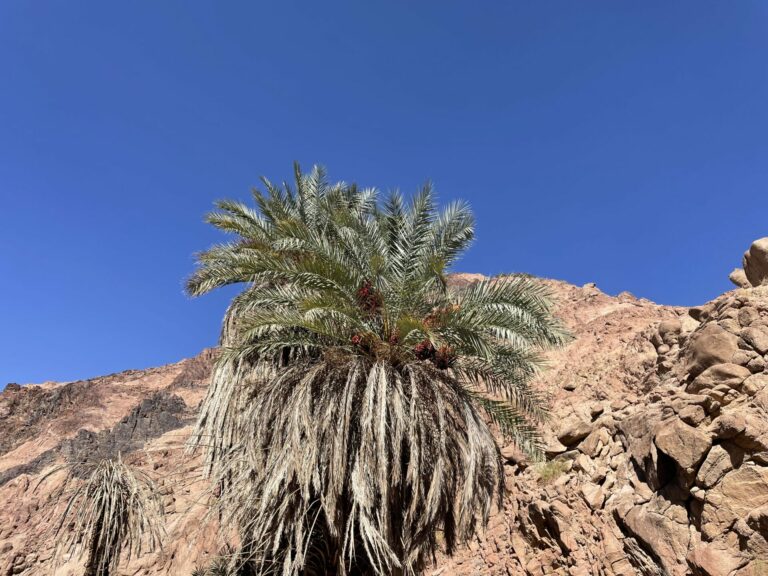
One of the delicacies along the way were the figs we encountered occasionally and the date palms as shown here. Dates fresh from the tree are to die for! The standard harvesting technique appears to be to throw rocks into the tree. Yours truly carries a throw line in his pack. One can lob this throw line across a cluster of dates on the tree and then shake it hard. Much more efficient.
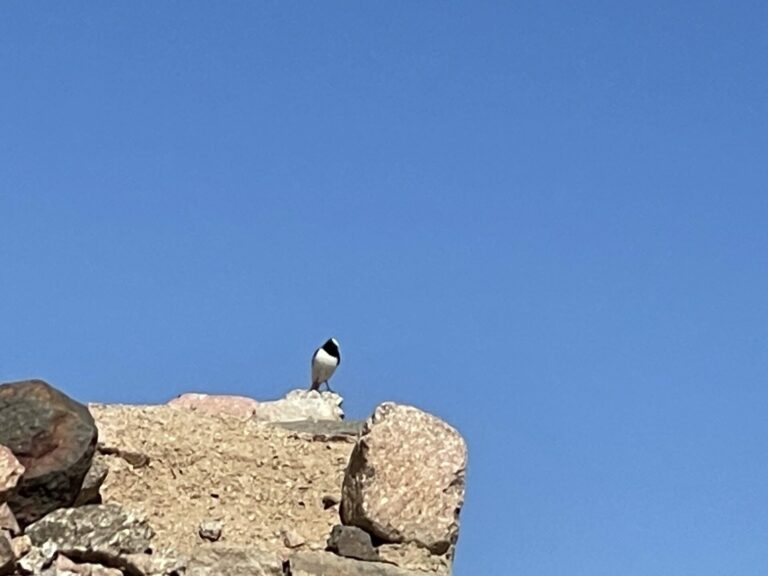
I am encroaching on Albatrossity territory here, but unlike me he is not able to produce a similarly crappy picture. There were a few bird species flitting about wherever there were bushes. These guys, however, were more or less ubiquitous together with another, entirely black bird. These wide capped ones (white-capped black wheat-ear) were introduced to us as flycatchers and the joke became that they all started out black and once they had caught a million flies they would get a white cap to indicate the achievement. There were so many flies in need of catching!
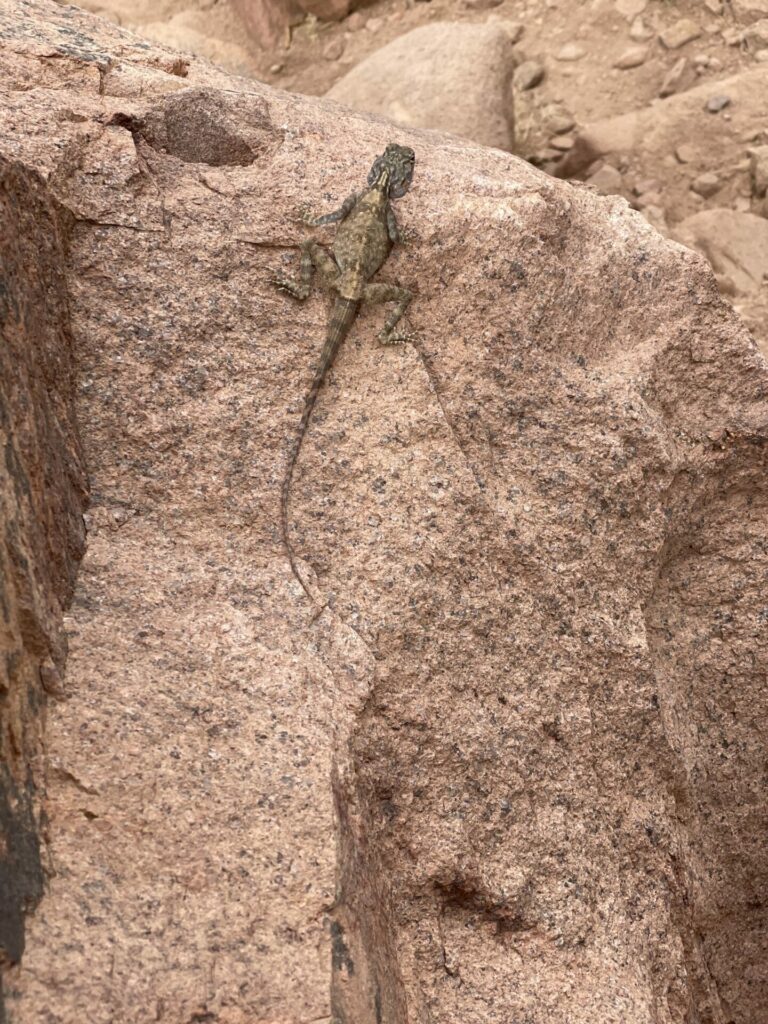
One of the two common lizards we saw almost every day. This one was pretty bold. Most of the time they would be hiding between the rocks covering the ground and blend in really well
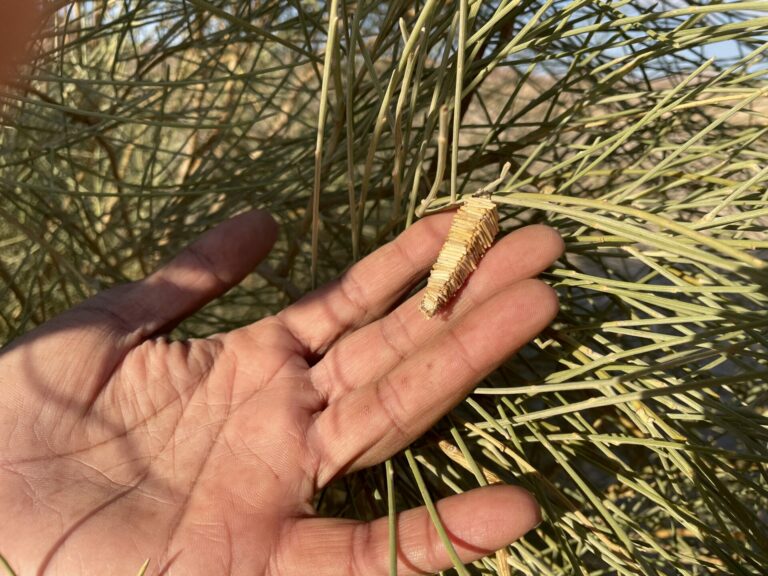
There is an insect in the Sinai the adult of which we never saw. What we did however see was its pupa, one of the developmental stages of insects. This is an insect that lives in close association with a bush called ratam that grows in sandy areas at moderate altitude. The needle-like (think long pine needles) leaves are shaped into this four-cornered shield. The how it’s done and who’s doing it is a mystery to me.

Manyakitty
Again, all I can say is WOW
OzarkHillbilly
Puts me in mind of our Honey Locusts, a little gift from the devil himself.
That is really cool.
Thanx for all, TKH.
eclare
Fascinating photos, thanks.
BretH
It’s a wonder how such an inhospitable place can breed so many flies! Saw the same thing in Niger when I was in the Peace Corps.
Albatrossity
That is a very interesting bird! Wheatears are indeed flycatchers, members of the Old World flycatcher family (Muscicapidae). And if it is a White-crowned Black Wheatear (Oenanthe leucopyga), the story about catching a million flies to get the white cap also has the ring of truth, since the youngsters have a black cap!
But more intriguingly, I don’t think it is a black wheatear; those are all black below and this one seems blindingly white. Best I can tell, it is an Arabian Wheatear (Oenanthe lugentoides), but the range map says that species is not typically found in the Sinai! It is found in similar rocky desert habitats, but is endemic to the southern Arabian peninsula…
So that is either a rare bird there, or it is some other wheatear. But based on that white belly, I don’t think it is one of the black wheatears. Very cool
ETA – This is a decent picture, not crappy at all. And I know crappy bird pictures; I bet I have more crappy bird pictures than all of the jackals combined!
MelissaM
This whole trip has been fascinating, but I appreciate this stop to admire the flora and fauna.
1, camels sure are strange looking beasts! 2, they sure eat some crazy stuff! 3, I now need to google about the insect that makes such a pupa and see if I can find video.
Your picture of the acacia at the oasis is quite lovely.
Edited to add: https://wanderingthroughwadis.com/2016/06/13/amicta-bagworm-moth/
Another Scott
Something similar was found in Saudi Arabia – your Sinai version was done by someone with much more pride in their work (or maybe better building materials close by).
;-)
A great series. Thanks!
Cheers,
Scott.
StringOnAStick
Love that you went on such a long journey in such a remote area, thanks for sharing with us!
TKH
@MelissaM: well thank you for that! I underestimated the probability that I could find that information. You were luckily not so inhibited!
TKH
@StringOnAStick: It all happened by chance, courtesy of Google, while I was looking for information on the Israel National Trail. Without having asked for it, I was served up content on the Sinai trail.
stinger
Thank you!
cope
This has been a wonderful story, beautifully illustrated, thank you.
way2blue
Ropes! Ugh. I’m guessing you acquired points with your fellow travelers for your throw rope skills. Thanks TKH for the photo journey—I marvel that any animals are able to live in such a sparse landscape.
BigJimSlade
I think it was when I was in Wadi Rum I was told, there are no wild camels – they all belong to somebody. As to the general applicability of that, I dunno.
Also in Jordan you could buy unripe dates at the grocery store. They were tan/yellow, crunchy, and a bit sweet and a bit bitter. An interesting change of pace, but you would only want a couple.
For that pupa, I can’t think of seeing anything built by a bug with 90 degree angles!
TKH
@BigJimSlade: It was in response to a question whether one could catch a wild camel and domesticate it that the existence of wild camels came up and the Bedouin said that there were. (And you should not go near a wild camel, they can, and do on occasion, kill a man.
A woman from anywhere (formerly Mohagan)
I see browse lines on trees are universal. We have them here on various Oaks, where the bottom branches are neatly trimmed by the deer (standing on their hind legs if necessary). Thanks for this series!